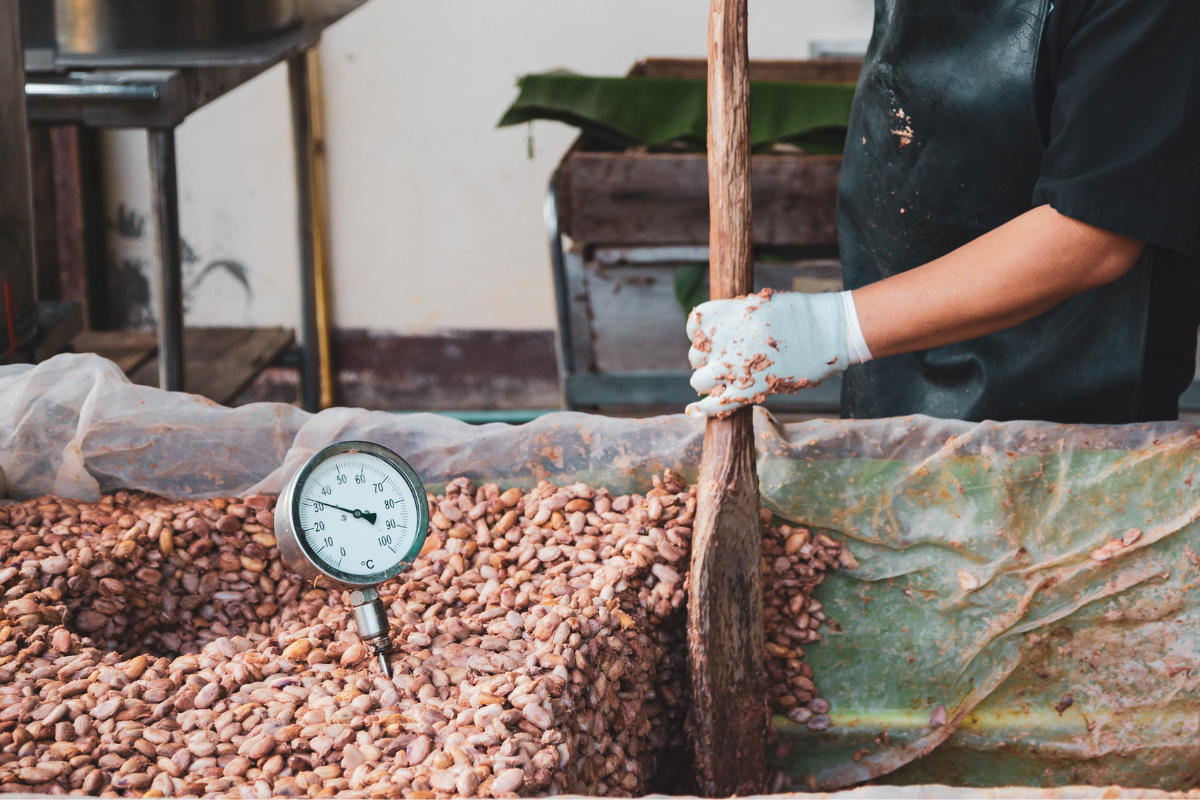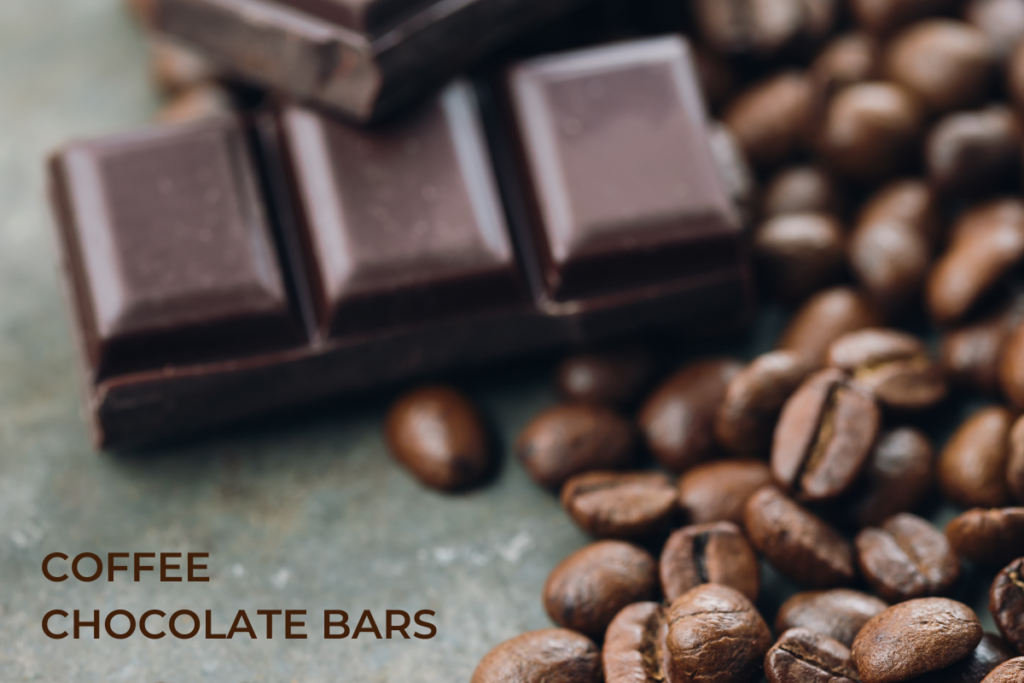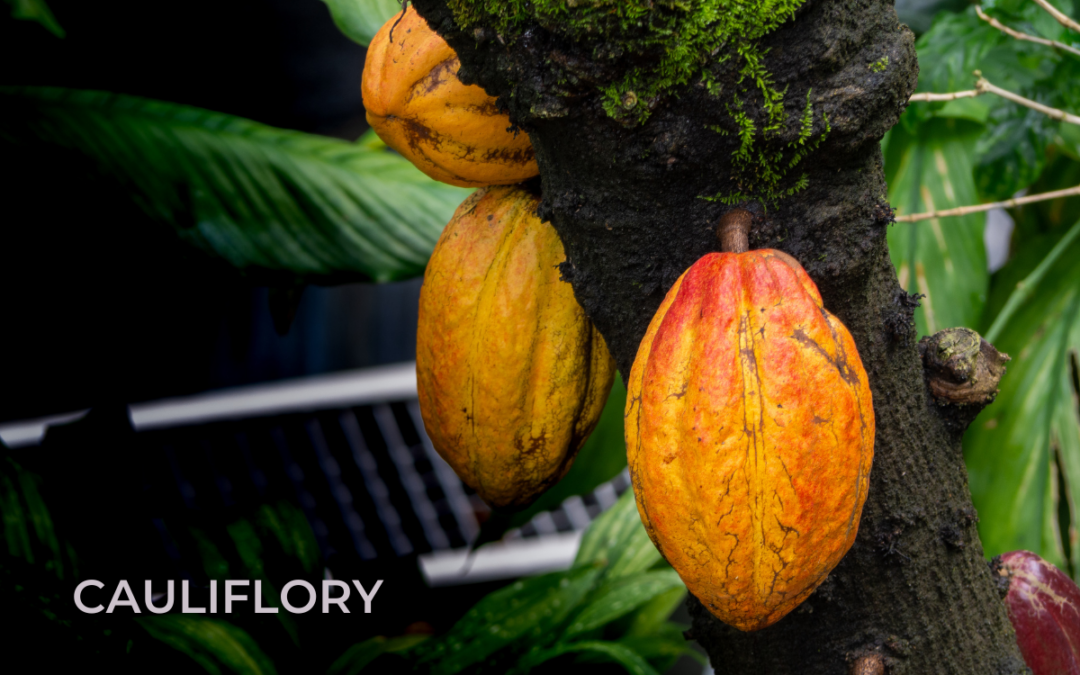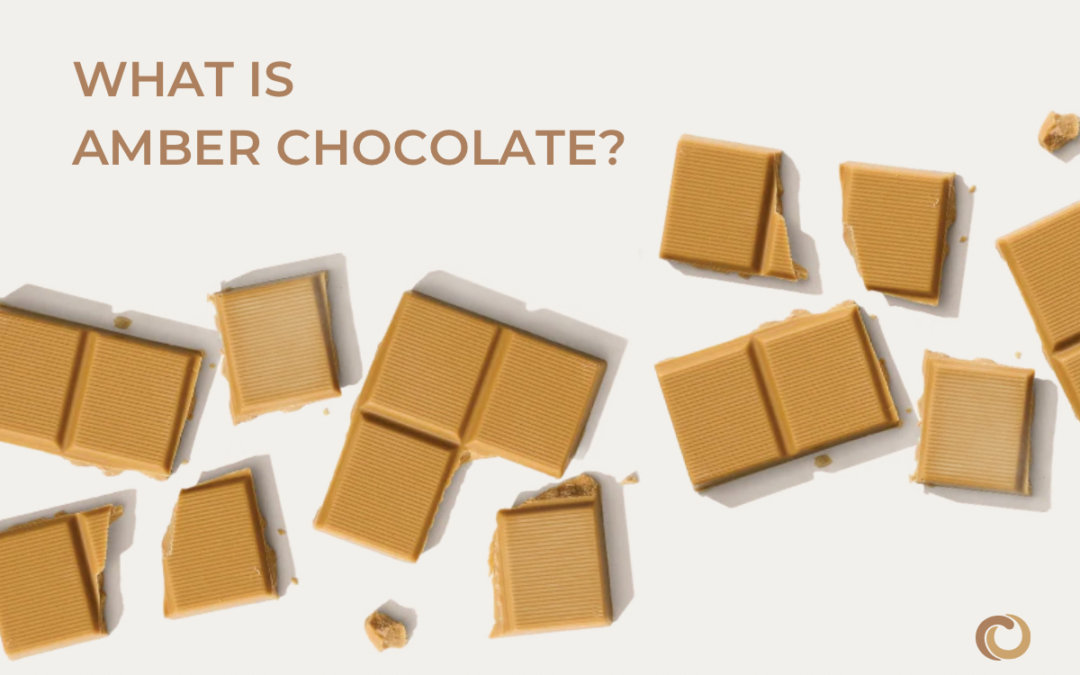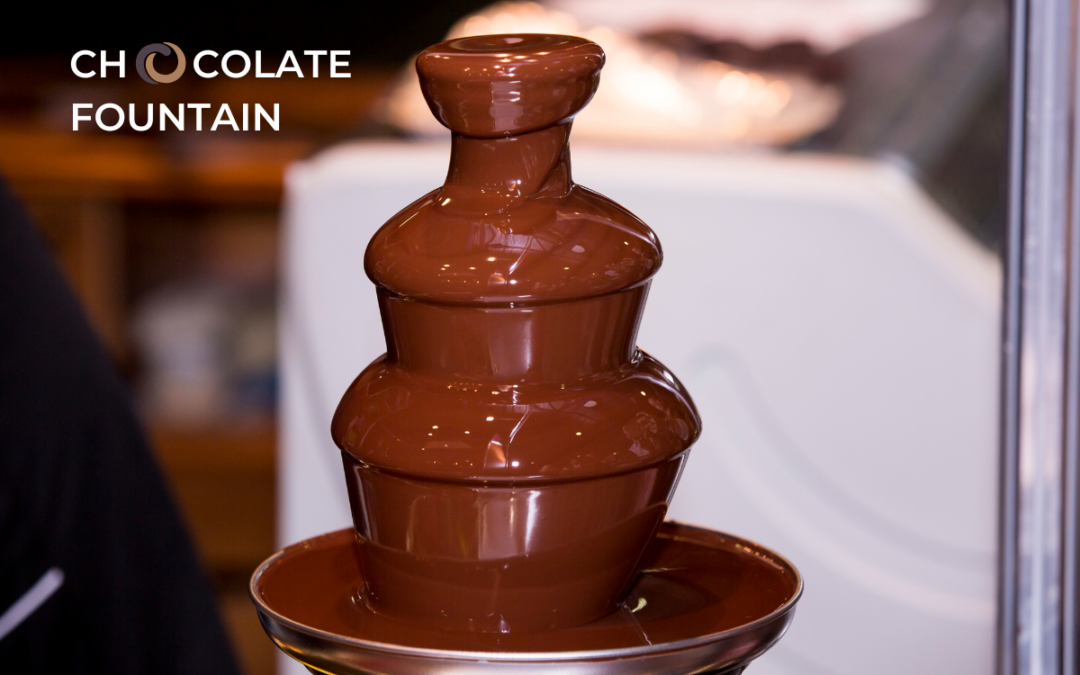Did you know that chocolate is a fermented food? If you didn’t, well, yes it is! Chocolate undergoes a fermentation process similar to that of wine. Fermentation is crucial in chocolate making as it significantly reduces bitterness and astringency in the cocoa beans while enhancing the development of chocolatey, fruity, and floral flavors. Keep reading to learn about the detailed stages of chocolate fermentation, from cacao pod harvest to the creation of complex flavor profiles that make chocolate so delicious.
What is fermentation in chocolate production?
Cocoa fermentation is a crucial step in the process of transforming cacao beans into chocolate. During fermentation, the harvested cacao beans, which are the seeds of the cacao fruit, are placed in piles or wooden containers and allowed to ferment for typically five to seven days.
During this time, naturally occurring yeasts and bacteria on the surface of the beans and on banana leaves that are used to line the fermentation container, initiate the fermentation process. These microorganisms consume the sugar present in cacao pulp that surrounds the beans, converting it into alcohol (ethanol) and organic acids by the end of the process.
In the first stage of fermentation, yeast consume the sugar in the cacao pulp and convert it into alcohol. The temperature of the heap increases and the alcohol starts to infuse into the cacao beans. This kills the cacao seeds and prevents them from germinating, while at the same time, it starts to develop the chocolate flavors in the beans. This first stage is anaerobic and doesn’t require oxygen to proceed.
In the second stage of fermentation, bateria transform the ethanol into acetic acid. This is an aerobic phase, meaning that it requires oxygen, so the farmers must stir and churn the mass of cocoa beans to aerate the heap to ensure proper fermentation. Again, the organic compounds created during the fermentation process infuse into the cocoa beans and continue the flavor development.
Importance of fermentation in chocolate quality
As fermentation progresses, the temperature and acidity of the bean mass rise, creating an environment that is conducive to the development of desirable chocolate flavor precursors. This process also helps to reduce bitterness and astringency in the beans by breaking down polyphenols which enhance the development of chocolatey, fruity, and floral flavor notes.
Proper fermentation is essential for achieving the desired flavor profile in chocolate. It is a critical step that significantly influences the final taste and quality of the chocolate product.
Stages of fermentation in chocolate production
- Harvest: Cacao pods are picked from cacao trees, and only the ripest pods are selected based on their quality.
- Extraction: The pods are cut open to extract the cacao beans and pulp.
- Anaerobic Fermentation: The harvested cacao beans, still coated in pulp, are gathered into piles or containers for fermentation. This fermentation stage typically lasts from a few days to a week.
- Aerobic Fermentation: During fermentation, the beans are mixed and aerated periodically to ensure even fermentation and oxygenation.
- Drying: After fermentation, the beans are spread out to dry in the sun or in drying facilities.
- Sorting: Once dried, the beans are sorted and graded based on size, quality, and flavor.
What can go wrong with fermentation?
In many countries, chocolate bars must state the percentage of cocoa content, showing how much cocoa solids and cocoa butter they contain. But, despite the fact that fermentation is critical for fine flavor development, there is no requirement to disclose anything about the fermentation process.
- Incomplete Fermentation: If fermentation is stopped too early or not properly controlled, it may not fully break down sugars or develop desirable flavor compounds. This can result in a chocolate with a less complex or flat flavor profile. The chocolate flavor may also be dominated by astringent flavors.
- Over-Fermentation: If fermentation goes on for too long, the beans can become excessively acidic and acquire undesirable flavors. Over-fermented cocoa beans might have sour, vinegary, or fermented notes, which can harm the chocolate’s flavor.
- Poorly Managed Temperature: The fermentation temperature is vital for the rate and quality of fermentation. High or fluctuating temperatures can speed up fermentation, resulting in over-fermentation and unwanted flavor changes. Conversely, low temperatures can slow down or hinder fermentation altogether.
- Inadequate Oxygen Supply: The aerobic phase of cocoa fermentation relies on oxygen for efficient processing. If there’s not enough aeration during fermentation, it can lead to uneven fermentation and the growth of unwanted microorganisms. This can cause off-flavors and inconsistent quality in the final product.
- Contamination: If sanitation practices aren’t maintained during fermentation, unwanted microorganisms like molds or bacteria can contaminate the process. This can have negative effects on fermentation and cause off-flavors or spoilage of the cocoa beans.
- Environmental Factors: Changes in environmental conditions like humidity, rainfall, temperature and sunlight can impact cocoa fermentation. Extreme weather or contaminants can disturb the process and quality of the cocoa beans.
In summary, fermentation is essential for enhancing the taste and texture of beloved foods such as chocolate, coffee, and wine. It’s the key ingredient in creating rich, smooth, and delicious chocolate. Without fermentation, chocolate would not have its recognizable flavor characteristics, and would be overwhelmed by offputting bitterness and astringency. Therefore, understanding the subtleties of fermentation is crucial for producing top-quality chocolate products.
There is a lot to be learned from the wine industry regarding fermentation and flavor optimization, and current research that will positively impact the future of chocolate flavor. In the meantime, enjoy your fermented chocolate!
For more great articles and recipes, check out the rest of our CocoTerra blog.
If you have any questions or comments, feel free to contact us through our social media channels. We are @cocoterra_co on Instagram and Pinterest and @cocoterraco on X (aka Twitter) and Facebook.

